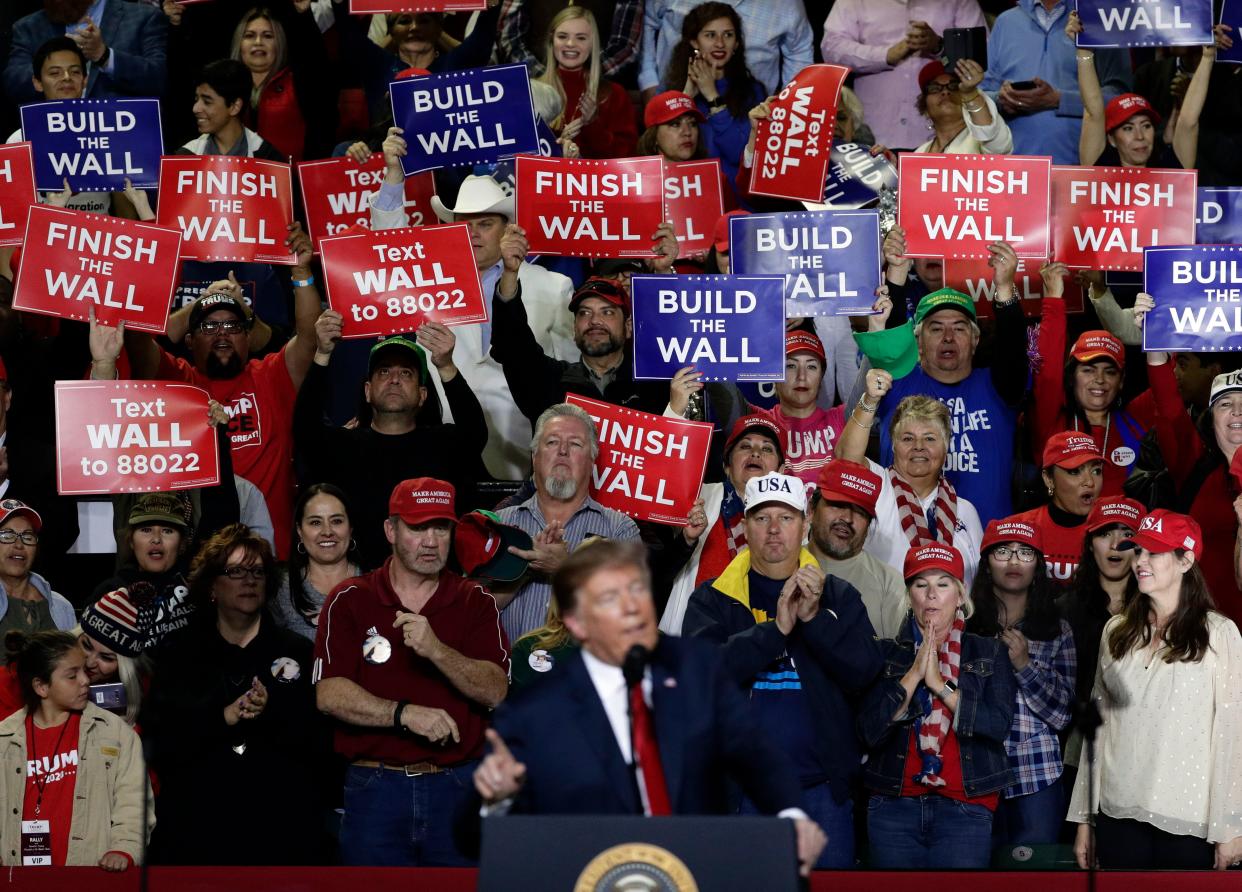Government shutdown: What's in the tentative deal on border security and federal funding?

WASHINGTON – No one gets everything they want in a tentative border security deal announced late Monday – including President Donald Trump.
A bipartisan group of lawmakers announced a deal “in principle” that would avoid another government shutdown and hand Trump $1.375 billion for border barriers, far less than the $5.7 billion he had demanded for his proposed "wall" on the southwest border.
Here's a look at what's in the deal:
Border barrier money
Trump's demand for $5.7 billion for the wall was at the center of the historic, 35-day government shutdown. But the deal pieced together by Capitol Hill negotiators includes $1.375 billion – far less than his original request. And, as in the past, the agreement would place similar restrictions on how that money can be spent, chiefly that it could pay only for "bollard wall" style barriers that were previously used under the Obama administration. Trump has gone back and forth in his public comments on how he would define a "wall," but the White House has been increasingly open to steel slat barriers.
The White House is also looking for ways to find more money for the barriers, through executive actions – including the possibility of declaring a national emergency.
Miles of barrier
The president's most recent request for $5.7 billion in early January stated the money would pay for "234 miles of new physical barrier." That's a shift from late last year, when the administration indicated that it would use the money to build about 215 miles of barriers, only 100 miles of which would be new. Congressional aides said the tentative agreement would fund 55 miles of new barrier, but it was not yet clear whether the funding would also cover the replacement of existing border fencing. The U.S.-Mexico border is roughly 2,000 miles.
ICE beds
Democrats sought to limit the number of detention slots, or "beds," that U.S. Immigration and Customs and Enforcement could have at its disposal to detain immigrants in the country illegally who were apprehended within the nation's interior. Democrats had originally hoped to cap that number at 16,500. The White House rejected that proposal and Trump repeatedly slammed it publicly.
Instead, Democrats have agreed to no cap on detention slots for immigrants captured within the country. The deal would include enough funding to cover 40,520 beds overall, a number that includes detentions for interior arrests as well as immigrants who are caught at the border. If Democrats had capped interior slots at 16,500, the overall number of beds available to ICE would have been about 35,000.
But both sides acknowledged that the agency has routinely exceeded limits imposed by Congress, and would likely continue to do so.
More: In government shutdown aftermath, federal workers still hurting, survey finds
More: Can the middle-class revival under Trump last?
More 'humane' detentions
Congressional aides said the agreement would include additional money to improve temporary Customs and Border Protection facilities that are used to hold migrants, including children and families. The condition of the border facilities has been controversial for years and drew renewed attention late last year after two children died in federal custody. Aides did not say how much more money would be directed to the facilities.
This article originally appeared on USA TODAY: Government shutdown: What's in the tentative deal on border security and federal funding?

